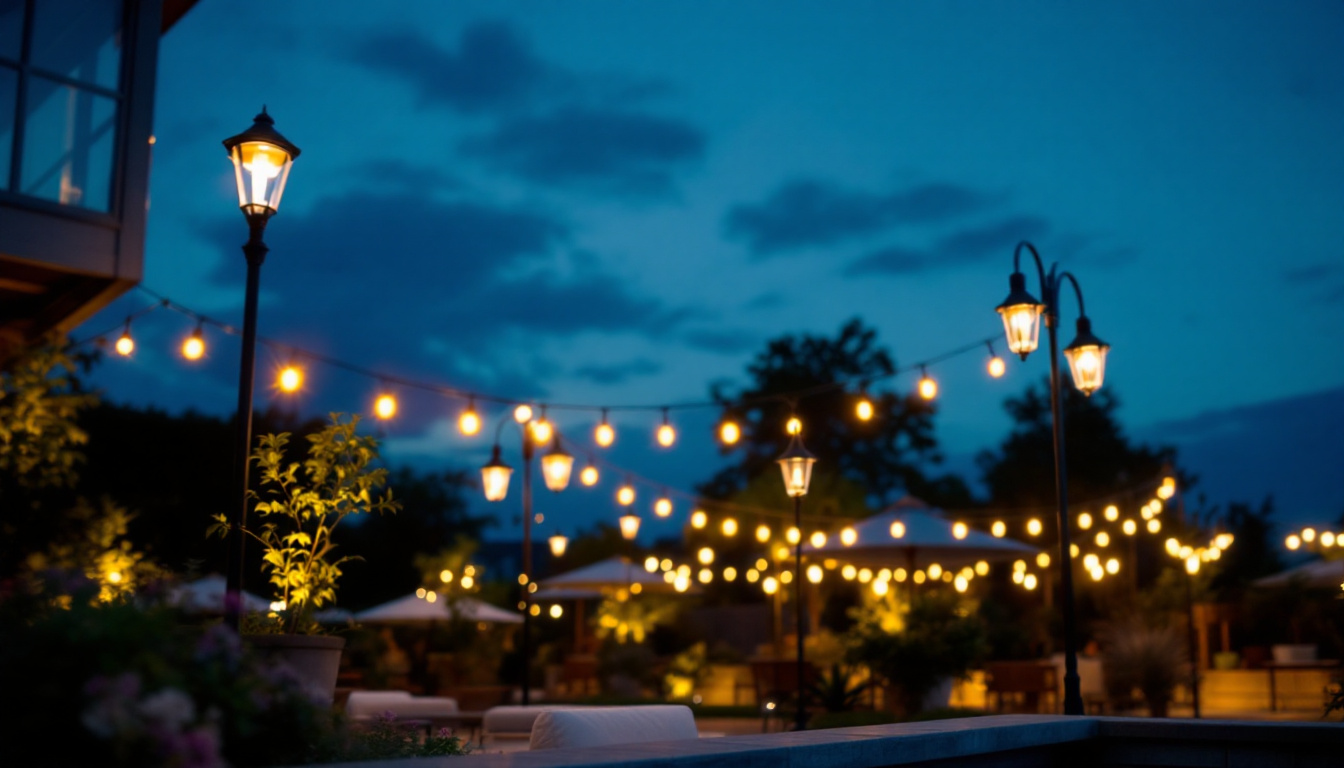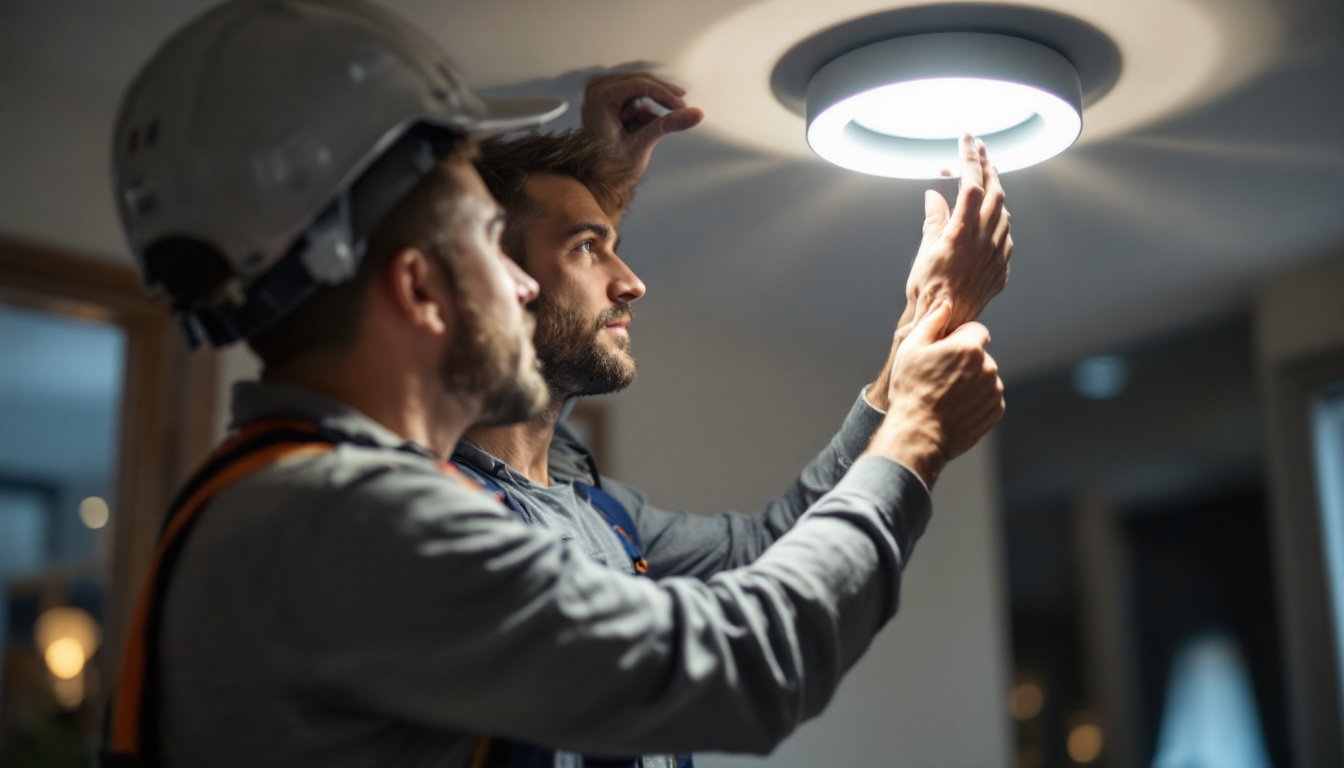
Lighting plays a pivotal role in enhancing the aesthetics and functionality of outdoor spaces. For lighting contractors, understanding the nuances of outdoor dawn to dusk lighting is essential for delivering quality installations that meet client expectations. However, even seasoned professionals can make mistakes that compromise the effectiveness of their designs. This article explores common pitfalls in outdoor lighting projects and offers insights on how to avoid them.
Dawn to dusk lighting systems are designed to automatically illuminate outdoor areas from sunset to sunrise. These systems rely on sensors that detect ambient light levels, ensuring that lights turn on at dusk and off at dawn without manual intervention. This technology not only enhances safety and security but also adds aesthetic appeal to outdoor environments. By providing consistent illumination during the night, these systems can deter potential intruders and create a welcoming atmosphere for residents and guests alike.
For contractors, grasping the functionality and benefits of these systems is the first step toward successful installations. However, the implementation of dawn to dusk lighting can be fraught with challenges if not approached with care and expertise. Understanding the various components involved, such as the types of sensors and the specific electrical requirements, is crucial for ensuring a smooth installation process. Additionally, staying updated on the latest advancements in lighting technology can provide contractors with a competitive edge in the market.
One of the most significant mistakes lighting contractors make is neglecting the planning phase. Proper planning involves assessing the landscape, understanding client needs, and determining the most suitable lighting solutions. Without a comprehensive plan, contractors may overlook essential factors such as light placement, intensity, and the types of fixtures that best suit the environment. This oversight can lead to uneven lighting, creating dark spots that compromise safety and visibility.
Moreover, failing to consider the surrounding architecture and landscape can lead to lighting that feels disjointed or ineffective. A well-thought-out plan ensures that the lighting enhances the overall design rather than detracting from it. It is also beneficial to involve clients in the planning process, as their insights and preferences can guide the selection of lighting styles and placements that resonate with their vision. Engaging clients can foster a collaborative atmosphere that ultimately leads to greater satisfaction with the final result.
Another common error is selecting inappropriate fixtures for the specific outdoor environment. Not all lighting fixtures are created equal, and using the wrong type can lead to poor performance and client dissatisfaction. For instance, fixtures that are not rated for outdoor use may corrode or fail prematurely when exposed to the elements. Selecting durable materials that can withstand weather conditions is essential for ensuring longevity and reducing maintenance costs.
Contractors should also consider the style and design of the fixtures. The chosen lights should complement the architecture of the home and the surrounding landscape. A mismatch can create an unappealing visual effect, undermining the overall objective of the lighting project. Furthermore, energy efficiency is an important factor to consider; opting for LED fixtures not only reduces energy consumption but also offers a longer lifespan compared to traditional bulbs. This choice aligns with the growing trend toward sustainable practices in outdoor lighting, appealing to environmentally conscious clients and contributing to energy conservation efforts.
Installation is a critical phase in any lighting project, and mistakes made during this stage can have lasting consequences. From improper wiring to inadequate positioning, several common errors can hinder the effectiveness of outdoor dawn to dusk lighting.
Electrical wiring is a fundamental aspect of any lighting installation. However, many contractors make the mistake of cutting corners during this process. Using substandard wiring, failing to follow local electrical codes, or neglecting to secure connections can lead to safety hazards and malfunctioning systems.
It is crucial to use high-quality materials and adhere to best practices when wiring outdoor lighting systems. This not only ensures safety but also enhances the longevity and reliability of the installation. Additionally, proper insulation and protection against weather elements are essential, especially for outdoor setups. Using waterproof connectors and UV-resistant cables can prevent deterioration over time, ensuring that the lighting system remains functional and safe throughout its lifespan.
Another frequent oversight is improper light placement. Lights that are too close together can create harsh shadows and uneven illumination, while fixtures that are too far apart may leave dark spots in the landscape. Achieving the right balance requires careful consideration of the space and the intended effects.
Contractors should take the time to walk the site and visualize how the lighting will interact with the environment. A strategic approach to placement can significantly improve the overall effectiveness of the lighting design. Furthermore, considering the height and angle of the fixtures is vital; lights positioned too low may not illuminate the desired areas effectively, while those placed too high can wash out details. Incorporating features such as dimmers or adjustable fixtures can also enhance flexibility, allowing for adjustments based on seasonal changes or specific events, thereby maximizing the utility of the lighting system.
In outdoor dawn to dusk lighting systems, sensors and controls play a crucial role in functionality. However, many contractors overlook the importance of selecting and installing these components correctly.
Using inappropriate sensors can lead to issues such as lights turning on too early or too late, or failing to turn on at all. Contractors must ensure that the sensors are suitable for the specific environment and can accurately detect ambient light levels.
Additionally, it is essential to consider the location of the sensors. Installing them in shaded areas or locations where they may be obstructed can hinder their performance, leading to unreliable lighting operation.
Once the installation is complete, testing the controls is a critical step that is often overlooked. Contractors should verify that the sensors and timers are functioning correctly and that the lights respond as intended. Failing to conduct thorough testing can result in client dissatisfaction and costly callbacks.
Taking the time to test all components ensures that the system operates smoothly and meets the client’s expectations. It also provides an opportunity to address any issues before the project is considered complete.
Aesthetics are a vital aspect of outdoor lighting design. Poorly executed lighting can detract from the beauty of the landscape and the architecture of the home. Contractors must be mindful of how their lighting choices impact the overall visual appeal of the space.
One common mistake is neglecting the natural landscape when designing the lighting layout. Outdoor lighting should enhance the existing features of the landscape, such as trees, shrubs, and pathways. Ignoring these elements can result in a design that feels disconnected from the environment.
Contractors should consider how the lighting will interact with the landscape throughout different times of the day and seasons. This approach ensures that the lighting not only serves functional purposes but also highlights the beauty of the outdoor space.
Another aesthetic misstep is using overly bright lighting. While it is essential to provide adequate illumination for safety and security, excessively bright lights can create an unwelcoming atmosphere and cause glare. Striking the right balance between brightness and ambiance is crucial.
Utilizing dimmers or selecting fixtures with adjustable brightness can help achieve the desired effect. Additionally, contractors should consider the color temperature of the lights, as warmer tones can create a more inviting atmosphere compared to harsh, cool white lights.
Once the installation is complete, the relationship between the contractor and the client should not end. Maintenance and follow-up are essential for ensuring the longevity and effectiveness of the lighting system.
Many contractors fail to provide clients with proper maintenance recommendations. Outdoor lighting systems require periodic checks to ensure that fixtures are clean, sensors are functioning correctly, and wiring remains secure. Without regular maintenance, the system may degrade over time, leading to costly repairs or replacements.
Contractors should educate clients on how to care for their lighting systems and offer ongoing maintenance services. This proactive approach not only enhances client satisfaction but also establishes a reputation for reliability and professionalism.
Following up with clients after the installation is a crucial yet often overlooked aspect of the contractor-client relationship. A simple check-in can provide valuable feedback and address any concerns the client may have. This communication can also lead to referrals and repeat business.
Contractors should establish a follow-up protocol to ensure that clients feel supported and valued. This can include scheduled maintenance visits, reminders for seasonal checks, or simply reaching out to see how the system is performing.
Outdoor dawn to dusk lighting presents a unique set of challenges for lighting contractors. By understanding common mistakes and taking proactive steps to avoid them, contractors can enhance their installations and ensure client satisfaction. From proper planning and fixture selection to meticulous installation and ongoing maintenance, attention to detail is key to successful outdoor lighting projects.
Ultimately, the goal is to create outdoor spaces that are not only functional but also visually appealing. By avoiding these common pitfalls, lighting contractors can elevate their work and contribute to the beauty and safety of outdoor environments.
Ready to avoid common pitfalls and elevate your outdoor dawn to dusk lighting projects? At LumenWholesale, we provide lighting contractors with the tools they need to succeed. Our spec-grade lighting products are designed to meet the highest industry standards, ensuring you deliver reliable and visually appealing outdoor spaces every time. With unbeatable wholesale prices and the convenience of free shipping on bulk orders, you can trust LumenWholesale to supply premium lighting without the premium price tag. Don’t compromise on quality or value — explore our selection and experience the best in wholesale lighting today.

Discover how canister light trim rings are revolutionizing the lighting industry, offering contractors a versatile and stylish solution that enhances both functionality and aesthetics.

Discover the growing importance of changing fluorescent to LED lighting, unlocking energy savings of up to 75%, enhanced durability, and eco-friendly benefits—transform your space today!.

Discover innovative hacks for smart lighting contractors to enhance their hi hat lighting projects.

Illuminate your projects with expert insights! Discover essential tips and innovative strategies for lighting contractors to enhance shop environments, boost efficiency, and create captivating displays..